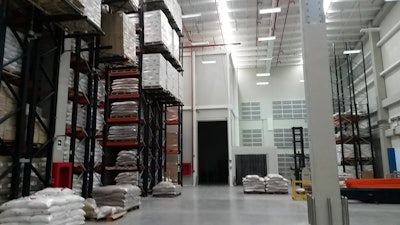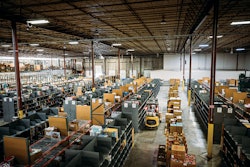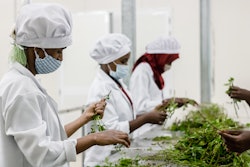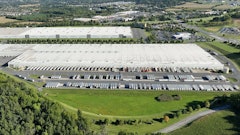
As more companies are making big commitments to become more sustainable businesses, the corporate world is making substantial moves to become greener and reduce their environmental impact. Driven by their shareholders, employees and customers, companies understand their obligation to reduce their negative environmental impact and contribute more to healthier communities.
To help these companies achieve their sustainability goals, the U.S. Green Building Council (USGBC) has continued to update its Leadership in Energy and Environmental Design (LEED) program to meet the needs of companies across all sectors. For more than 25 years, LEED has continued to be the most widely used green building rating system in the world, and remains a leading standard because it changes to meet the demands of the marketplace, capitalizing on new technologies, ideas and products.
LEED has been used across the foodservice industry since the early 2000s and is a trusted sustainability tool for many companies. It’s served as a reliable framework for the sector to standardize sustainable design and operations across a portfolio.
The current version, LEED v4.1, brings greater awareness to human health and well-being. In addition, LEED v4.1 encourages teams to focus on performance data in an effort to help make more informed decisions and better manage what they’re measuring.
LEED for building design, construction, operations and maintenance
Warehouses and distribution centers around the world are using LEED for Building Design & Construction (BD&C) for new buildings and LEED for Operations and Maintenance (O+M) for existing buildings.
LEED BD&C for warehouses and distribution centers is designed for facilities used to store goods, manufactured products, merchandise, raw materials or personal belongings, like self-storage. This rating system addresses the differences in energy use, site selection and resource usage from more heavily occupied buildings, while still applying the principles of sustainability. LEED BD&C provides a framework for building a holistic green building.
LEED O+M for warehouses and distribution centers is designed for existing facilities used to store goods, manufactured products, merchandise, raw materials or personal belongings (such as self-storage). LEED O+M addresses the difference in energy use, occupant levels and resource usage from more heavily occupied buildings, while still applying the principles of sustainability.
LEED O+M also provides existing buildings an opportunity to pay close attention to building operations, by supporting whole buildings and interior spaces that have been fully operational and occupied for at least one year. LEED O+M addresses the difference in energy use, occupant levels, and resource usage from more heavily occupied buildings, while still applying the principles of sustainability. The program tracks performance in energy, water, waste, transportation, indoor air quality, toxin-free environment and occupant satisfaction and provides LEED points based on performance.
Currently, there are more than 1,571 LEED-certified warehouses and distribution centers around the world totaling 568,648,197 gross square feet of space. These facilities store and distribute everything from manufactured products and merchandise to raw materials and food and even personal belongings, like self-storage. By focusing on both performance-oriented sustainable strategies and outcomes, LEED helps build high performing buildings.
Sustainability in the food chain sector
One sector that making strides in their sustainability efforts in warehouse and distribution is the food chain industry. This sector faces unique challenges along their green journey, but are finding innovative ways to address their operations’ environmental impact.
For example, energy usage is one of the biggest operational expenses, particularly for cold food chain suppliers. Refrigeration uses a substantial amount of energy, so companies are turning to alternative energy sources like solar and wind and as well as new energy efficient cooling technology.
Lighting can also be a significant source of energy consumption for warehouses, and supply chain companies are looking for ways to decrease those high costs. By using strategies like using daylight, stormwater and lighting systems more efficiently warehouse, companies can reduce their energy costs and earn more LEED points.
Companies are also taking notice of consumers’ desire to see companies make bigger commitments to sustainability, particularly through packaging. Food suppliers are taking steps to reduce the use of single-use plastics and turn to more eco-friendly materials and reducing the amount of waste to ends up in landfills.
On the distribution side of the food supply chain, companies are looking for ways to address transportation concerns such the high emission rates of transporting foods and the amount of food loss. Some companies are looking at more efficient transportation methods that rely less on gas-power vehicles as way to reduce emissions as well as food loss and waste.
In implementing these strategies, food supply chains are seeing that they are reducing energy and water usage, lowering their emissions and decreasing the amount of waste they produce, which translates to lower operation costs.
















